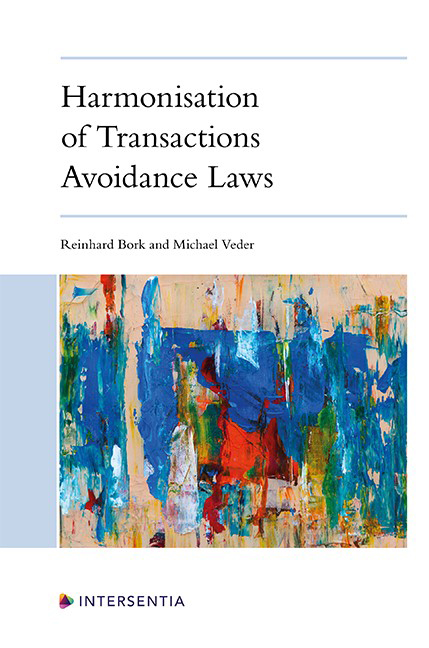Italy
Published online by Cambridge University Press: 26 May 2022
Summary
A. INSOLVENCY LAW OF ITALY
In Italy, insolvency procedures and proceedings are regulated by a specific insolvency statute. Currently, this is the “Regio Decreto” of 16 March 1942, No. 267, commonly called “Legge fallimentare” (Insolvency Statute). However, this Impact Assessment will be based on the recent “Code on Business Crisis and Insolvency Implementing Act 19 October 2017, No. 155” (Codice della crisi d ‘impresa e dell’ insolvenza in attuazione della legge 19 ottobre 2017, n. 155) of 12 January 2019, No. 14. This Code (with the exception of some regulations which have already entered into force) will enter into force on 16 May 2022. Henceforth, the “Codice della crisi d ‘impresa e dell’ insolvenza” will be abbreviated to “CCI”.
The CCI also regulates transactions avoidance (Art. 163 – 171), with the exception of the avoidance of transactions intentionally disadvantaging creditors. This is regulated by Art. 2901 – 2904 of the Civil Code. The law on transactions avoidance provided for by the CCI also applies to both natural persons and companies and other legal entities. By contrast, this law does not apply to consumers. On the other hand, the avoidance of transactions intentionally disadvantaging creditors regulated by Art. 2901 – 2904 of the Civil Code may also be employed within liquidation proceedings devoted to consumers (Art. 274(2) CCI).
In Italy, the rules on transactions avoidance law apply to liquidation proceedings only, with two important exceptions. The first exception refers to “Extraordinary administration proceedings”, with regard to which Art. 49(1) of D.Lgs. 270/1999 lays down that the Insolvency Practitioner appointed may apply the rules on transactions avoidance law, provided that the planned restructuring is based on an assets deal. The second exception refers to “Compulsory administration proceedings”, with regard to which Art. 6(1) of D.L. 347/2003 lays down that the Insolvency Practitioner appointed may apply the rules on transactions avoidance law, provided that the application of these rules is expected to produce an advantage for the general body of creditors.
- Type
- Chapter
- Information
- Harmonisation of Transactions Avoidance Laws , pp. 421 - 424Publisher: IntersentiaPrint publication year: 2022



